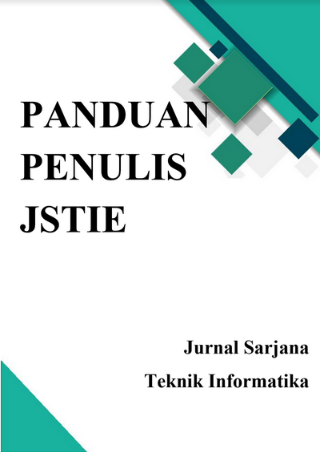VISUALISASI GEDUNG HOTEL GRHA SOMAYA YOGYAKARTA MENGGUNAKAN TEKNOLOGI VIRTUAL REALITY BERBASIS WEB
DOI:
https://doi.org/10.12928/jstie.v3i1.2940Abstract
Sebagai sebuah hunian, Hotel Grha Somaya berusaha memanjakan tamu yang menginap tak hanya yang datang untuk berlibur, tamu yang berkunjung untuk urusan bisnis juga mendapat pelayanan yang sempurna. Sistem promosi yang digunakan oleh pihak Hotel Grha Somaya masih bersifat manual seperti: Pamflet dan Brosur. Menggunakan media promosi ini kurang efektif karena menghabiskan bahan, tenaga dan waktu. Hotel Grha Somaya Yogyakarta sedang melakukan promosi untuk menarik calon pengunjung. Sistem promosi dan informasi yang disampaikan kepada konsumen atau calon pengunjung belum mampu memberikan gambaran secara nyata mengenai hotel Grha Somaya Yogyakarta. Media promosi yang digunakan oleh pihak hotel belum mampu menarik minat pengunjung.
Dalam penelitian ini yang menjadi obyek adalah aplikasi visualisasi 3D. Metode pengumpulan data dengan metode wawancara, observasi, kepustakaan dan dokumentasi. Tahap yang dilakukan dalam penelitian ini adalah analisis kebutuhan sistem, merancang sistem meliputi perancangan konsep, perancangan interface, perancangan menu, perancangan diagram navigasi serta perancangan grafis dan movie. Penelitian ini menggunakan perangkat lunak Adobe Flash Pro Cs6 sebagai perangkat lunak utama dalam pembuatan aplikasi. Perangkat lunak pendukung yaitu Google SketcUp Pro 2014 untuk animasi 3D hotel. Adobe Photoshop Cs6 untuk grafis. Pengujian sistem ini menggunakan Black Box Test dan Alfa Test..
Penelitian ini menghasilkan program aplikasi visualisasi 3D interaktif dalam saranan penyampaian informasi tentang hotel yang meliputi fasilitas berupa gambaran exterior dan interior hotel, info kamar hotel, denah hotel dan visualisasi gedung hotel. Aplikasi tersebut telah di uji coba dan dapat dijalankan dengan baik serta layak untuk diimplementasikan dan digunakan sebagai media promosi.
Â
Kata Kunci: Hotel Grha Somaya, Virtual Reality, Web.
References
Dedi E, 2007. Fakultas Teknologi Industri, jurusan teknik Informatika UAD, “visualisasi gedung hotel menggunakan teknolgi virtual reality berbasis multimedia.â€
Berta, S., Febriliyan, S dan Nisfu, AS, 2010. “Pembuatan Aplikasi 3D Viewer Mobile dengan Menggunakan Teknologi Virtual Reality “Perobekan Bendera Belanda di Hotel Majapahit.â€
Triyanto N, 2005. Fakultas Teknologi Industri, jurusan teknik Informatika UAD, “Implementasi Virtual Reality 3D Hotel Merak Indah Klaten. â€
Downloads
Published
Issue
Section
License
License and Copyright Agreement
In submitting the manuscript to the journal, the authors certify that:
- They are authorized by their co-authors to enter into these arrangements.
- The work described has not been formally published before, except in the form of an abstract or as part of a published lecture, review, thesis, or overlay journal. Please also carefully read Journal Posting Your Article Policy.
- The work is not under consideration for publication elsewhere.
- The work has been approved by all the author(s) and by the responsible authorities – tacitly or explicitly – of the institutes where the work has been carried out.
- They secure the right to reproduce any material that has already been published or copyrighted elsewhere.
- They agree to the following license and copyright agreement.
Copyright
Authors who publish with Jurnal Sarjana Teknik Informatika agree to the following terms:
- Authors retain copyright and grant the journal right of first publication with the work simultaneously licensed under a Creative Commons Attribution License (CC BY-SA 4.0) that allows others to share the work with an acknowledgement of the work's authorship and initial publication in this journal.
- Authors are able to enter into separate, additional contractual arrangements for the non-exclusive distribution of the journal's published version of the work (e.g., post it to an institutional repository or publish it in a book), with an acknowledgement of its initial publication in this journal.
- Authors are permitted and encouraged to post their work online (e.g., in institutional repositories or on their website) prior to and during the submission process, as it can lead to productive exchanges, as well as earlier and greater citation of published work.







